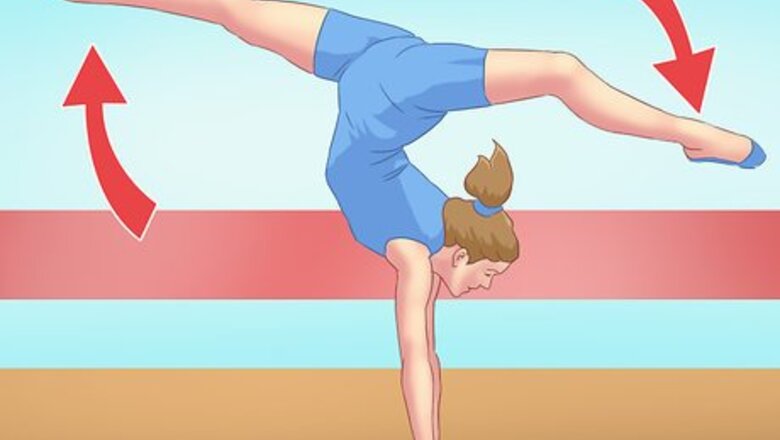
views
Familiarizing Yourself with the Motions
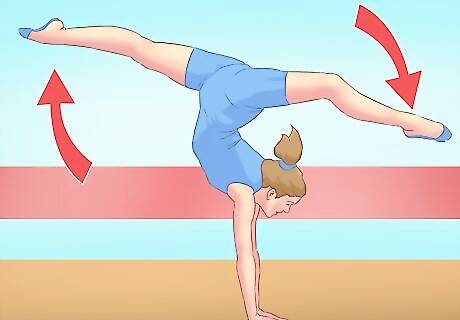
Master the prerequisites. Gymnastics skills build off of each other, and before you attempt the front aerial, you'll want to have mastered similar, more basic skills. This includes the front walk-over, the front handspring step-out, and the side-aerial. These skills involve attributes and motions comparable to the front aerial, and mastery will result in better execution.
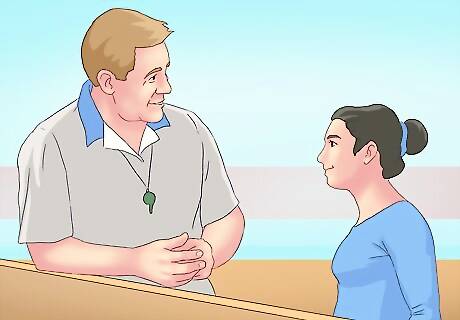
Ask your coach if you're ready. Unless you have learned the right prerequisites, doing a front aerial without the proper equipment and supervision could result in serious neck or back injury. Your coach is the person who knows your skill level best, so ask them their opinion and advice.

Prepare to simulate the motion. To help your body become accustomed to the uncanny sensation of doing an entire frontward revolution without the use of your hands, you're going to practice the motion into a foam pit. Stack two panel mats at the edge of the floor, near the foam pit. If your gym doesn't have a foam pit, talk with your coach and see if there's one nearby you can use for practice..
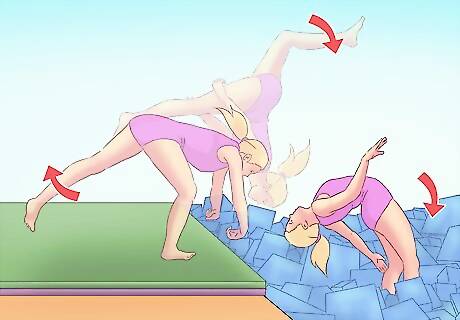
Perform the motion by splitting your legs and tumbling forward. Stand on one foot, push off by bending at the knee and driving with your leg, flip forward by leaning in and splitting your legs, and finally allow yourself to fall into the foam pit. This will help your body acclimate to the sensation of being upside down while unsupported and in motion. Your distance from the foam pit will depend on your height. Be sure you are close enough to the foam pit that you clear its lip and the intervening space in the course of your tumble. Generally, about six inches (15¼ cm) should be sufficient. Repeat this process several times until you are comfortable with the sensation.
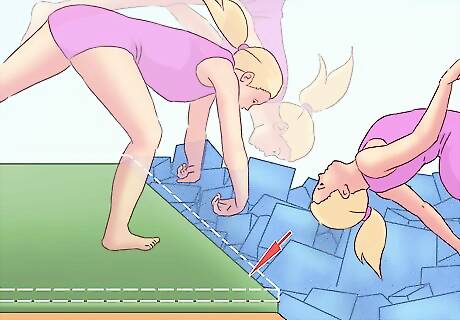
Remove a mat and practice into the foam pit again. The less vertical assistance you have from the mats, the more you will have to engage your legs and core to launch your body through the air. The fewer mats you use, the more like the real thing your practice will become.

Flip on a trampoline or tumble track. Your flip differs from a front aerial in that the an aerial requires you to keep your legs extended, which will slow your rotational velocity. Approach your flip at a run and then execute. Once you feel comfortable, try to step into a front aerial.
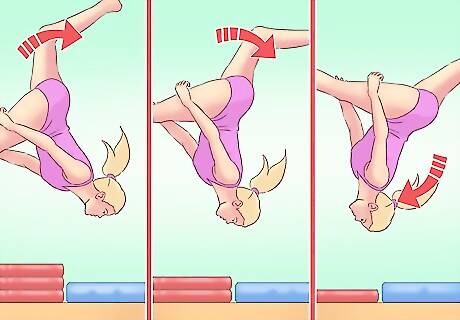
Attempt a front aerial on the floor with height aids. If you are comfortable with the previous drills and mastered the prerequisite skills, as your coach if you're ready to try a front aerial on the floor with height assistance. Take an eight inch mat and put it on a soft, padded gymnastics floor or carpet. Then stack three panel mats on top of each other, and another three behind those. Stand on the panel mats. Push off, flip, and land on the eight inch mat. Try to stick your landing! Lower height by removing mats once you perfect this motion. Then do it with two panel mats, one panel mat, then no panel mats!
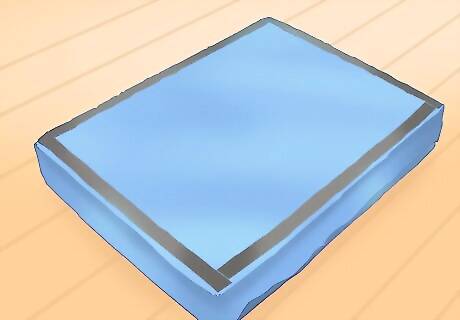
Protect yourself from injury while learning. Before trying to do a front aerial on plain floor, get a really thin mat, or a "pit pillow," and place it on bouncy floor or regular floor. Start off from the floor, and aim to land on the thin mat.
Executing a Front Aerial without Assists
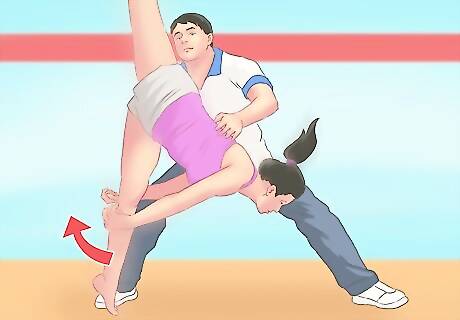
Get a spot. Your coach should be there for your first few attempts at an unaided front aerial for two reasons. Firstly, you'll want him to spot you while you master the move to prevent you from injuring yourself while learning. Secondly, he'll be able to give you pointers to improve your front aerial and make executing it easier.

Assume your start position and begin your forward motion. You should raise your arms up to your ears and lift your leading leg to step forward. Step into a lunge, bending your front leg to prepare to jump. Lower your shoulders to about the height of the knee of your forward leg and ready your arms to drive backward.
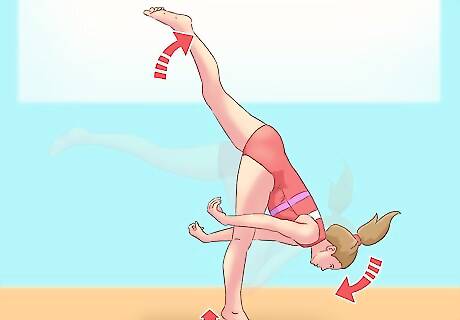
Drive back with your lower body. You should drive the heel of your back leg toward the ceiling. As you begin to push through the motion, straighten your base leg and swing back with your arms.
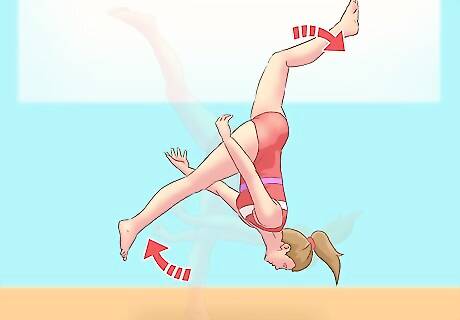
Lift your upper body. While your back heel and arms are reaching the highest/farthest point possible of your drive, you should also lift with your hips and chest. Finish the motion by pushing and jumping off your base leg, all the way through your foot.
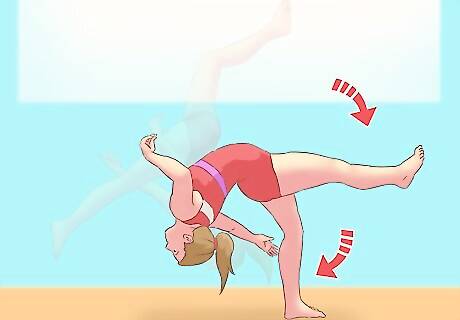
Land on your leading leg. You'll need to stay tight and maintain eye contract with the floor while you drive your leading heel and arms through the motion. Keep your head back as your leading leg begins to reach the floor. As your leading foot finds the floor, your trailing leg will follow. Keep your form tight and use your following leg as a counter-weight to pull your torso upright. Keep your head back throughout.
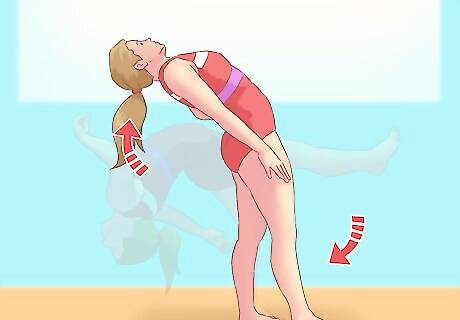
Return to the neutral position and step forward. As you approach the upright position you will again find your balance. Your arms should finish circling by your ears as your trailing leg descends. Then, step forward onto your trailing leg in a controlled fashion to complete the skill.


















Comments
0 comment